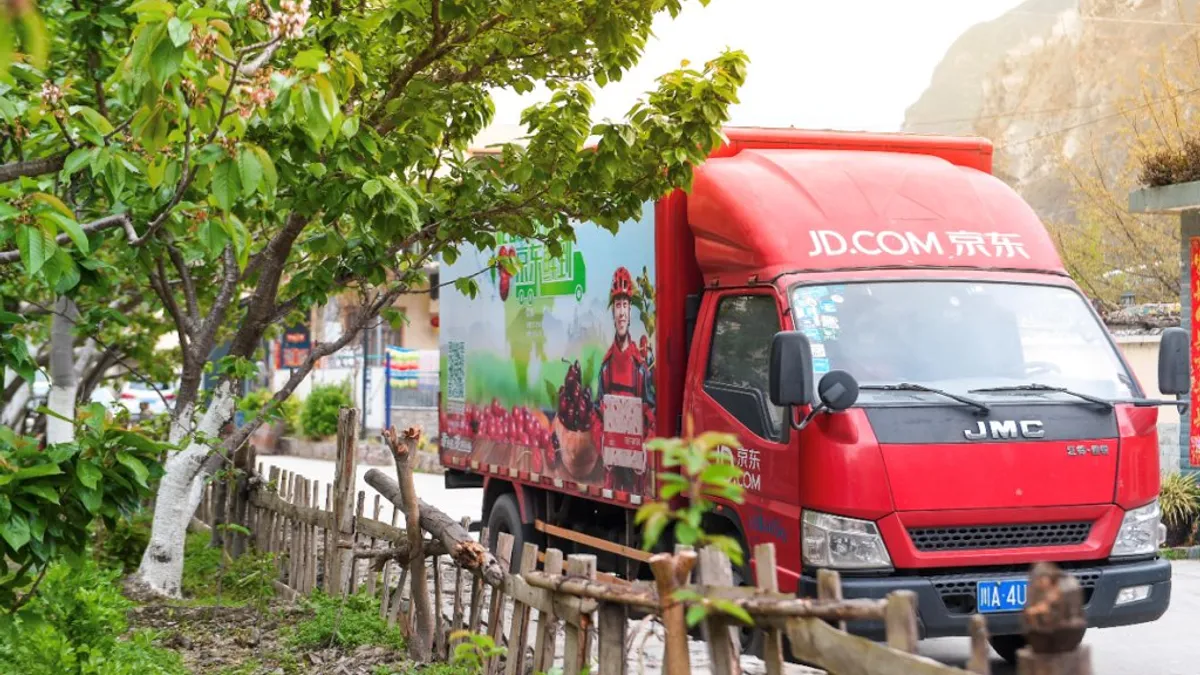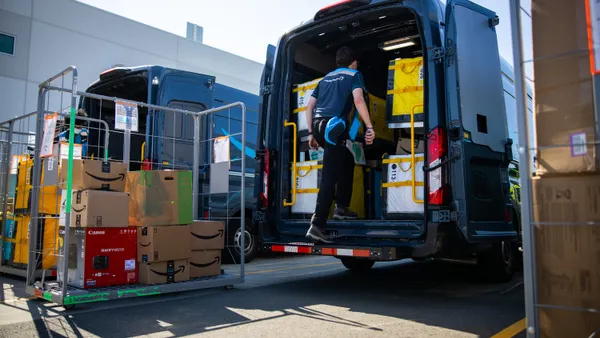Dive Brief:
- During the second quarter, JD.com opened a warehouse in Langfang, Hebei province, near Beijing that marks the company's first foray into automated storage and retrieval of big and bulky goods, the e-tailer announced in a press release accompanying its Q2 earnings release Monday. The system is "greatly improving efficiency in handling items including air conditioners, refrigerators and furniture," according to the release.
- The company's in-house logistics arm, JD Logistics, faced a 33.8% year-over-year increase in Q2 revenue. Technologies like warehouse automation helped 91% of orders placed through JD's direct sales platforms arrive same- or next-day, according to the company.
- The company added roughly 20 warehouses to its network during the quarter, growing the total to 750 warehouses, covering roughly 59 million square feet. JD.com also launched a one-hour delivery service, called "Instant Delivery" from some JD stores and third-party retail partners in April, while increasing its share in on-demand delivery partner Dada Group.
Dive Insight:
Record order volume has helped JD.com further improve the profitability of its growing logistics empire. JD Logistics broke even in Q2 2019 after five years of investment. Roughly one year later, executives reported the service is now turning a profit. Executives also credited their investments in technologies that drive fulfillment throughput with this improved profitability.
The cost to fulfill JD's record orders jumped 30.6% year over year — just under the growth rate for revenue with fulfillment encompassing procurement, warehousing, delivery, customer service and payment processing expenses, according to the company. But logistics and other services revenue was up 54%.
Wayfair, another e-commerce giant with an asset-heavy logistics strategy (though JD's square footage dwarfs Wayfair's) has seen a similar boost to network utilization and therefore profitability during the pandemic. Wayfair CEO Niraj Shah called the second quarter a "turning point" for the company after reversing a long streak of losses. Like JD, Wayfair has been building its logistics fleet over several years but has trailed the Chinese retailer in realizing the financial benefit of the effort, until recent order volume spikes.
With third-party parcel carriers stressed by surging e-commerce volume globally, these two examples suggest owning and controlling logistics assets is a plus in the year of the pandemic — as JD executives have said since March.
Wayfair, however, is out of its building phase, according to executives, and not looking to add more assets in the near term. JD, on the other hand, is moving on from core competencies of general merchandise deliveries in top-tier cities to larger format deliveries and lower-tier cities.













